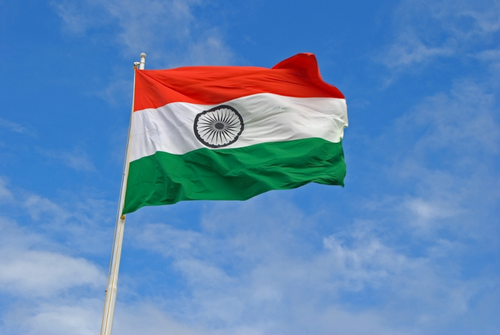Unfurling the Tricolour: 10 Fascinating Facts about the Indian National Flag for UPSC/IAS Exam Preparation
Blog Home
30-May-2023

Unfurling the Tricolour: 10 Fascinating Facts about the Indian National Flag for UPSC/IAS Exam Preparation
The Indian National Flag, also known as the Tricolour, is one of the most recognizable symbols of India. It was first hoisted on August 15, 1947, marking India's independence from British rule. The flag is made up of three colors, each representing a different aspect of India's history and culture. In this article, we will explore ten fascinating facts about the Indian National Flag that will help you in your UPSC/IAS exam preparation and give you a deeper understanding of India's national identity.
History and Evolution of the Indian National Flag
The Indian National Flag has a rich history that dates back to the Indian independence movement. The flag was first designed by Pingali Venkayya, an Indian freedom fighter, in 1921. The original design consisted of two colors, saffron and green, with a spinning wheel in the center. This design was later modified to include a white stripe in the middle to represent peace and unity.
The Tricolour, as we know it today, was adopted on July 22, 1947, by the Constituent Assembly of India. The flag features three equal horizontal bands of saffron, white, and green, with a navy blue Ashoka Chakra in the center. The flag's dimensions are in the ratio of 2:3, and it is flown horizontally with the saffron stripe on top.
Symbolism and Meaning of the Indian National Flag
The colors of the Indian National Flag hold significant meaning and symbolism. Saffron represents courage and sacrifice, white represents peace and truth, and green represents prosperity and faith. The Ashoka Chakra, a 24-spoked wheel in navy blue, represents the eternal wheel of law. The Chakra also symbolizes the dynamism of a peaceful change and the importance of justice in life.
The Tricolour represents the unity and diversity of India. It is a symbol of the country's struggle for independence and its diverse cultural heritage. The flag is a reminder of the sacrifices made by the freedom fighters who fought for India's independence.
The Three Colours of the Indian National Flag
The three colors of the Indian National Flag hold significant meaning and symbolism. Saffron represents courage and sacrifice. It is also the color of Hinduism, which is the dominant religion in India. White represents peace and truth. It is also the color of other religions in India, such as Christianity and Islam. Green represents prosperity and faith. It is also the color of Islam, which is the second-largest religion in India.
The colors of the Indian National Flag are arranged horizontally, with saffron on top, white in the middle, and green at the bottom. The arrangement of the colors is significant as it represents the Hindu-Muslim unity and the harmony between different religions in India.
The Ashoka Chakra - Significance and Meaning
The Ashoka Chakra is an integral part of the Indian National Flag. It is a 24-spoked wheel in navy blue and represents the eternal wheel of law. The Chakra also symbolizes the dynamism of a peaceful change and the importance of justice in life.
The Ashoka Chakra is based on the Lion Capital of Ashoka, which is a sculpture of four Indian lions standing back to back. The sculpture dates back to the 3rd century BCE and is now the National Emblem of India.
The Sizes and Dimensions of the Indian National Flag
The Indian National Flag comes in different sizes and dimensions. The flag's length and width are in the ratio of 2:3, and it is flown horizontally with the saffron stripe on top. The standard size of the flag for display is 150 cm x 90 cm, while the size for hoisting on government buildings is 270 cm x 180 cm.
The size and dimensions of the Indian National Flag are regulated by the Bureau of Indian Standards. The Bureau ensures that the flags produced are of the highest quality and meet the required specifications.
The Do's and Don'ts of Displaying the Indian National Flag
The Indian National Flag is a symbol of the nation's pride and identity. It is important to display the flag correctly and with respect. There are certain rules and regulations that must be followed when displaying the flag.
The flag should be hoisted and lowered with respect and dignity. It should never touch the ground or water. The flag should not be used for decoration, except on national days or occasions. The flag should not be used as a cloth for cleaning or wrapping. When the flag is damaged or faded, it should be disposed of in a dignified manner.
The Making of the Indian National Flag - Materials and Process
The Indian National Flag is made of Khadi, a hand-spun and hand-woven fabric. The production of Khadi is an important part of India's history and heritage. It represents Mahatma Gandhi's philosophy of Swadeshi, which advocated for the use of locally made products.
The process of making the Indian National Flag is a laborious one. The Khadi fabric is first dyed in the three colors of the flag. The three strips of fabric are then sewn together to form the Tricolour. The Ashoka Chakra is then printed onto the flag using a silk screen printing process.
Interesting Facts about the Indian National Flag
- The Indian National Flag was first hoisted on August 15, 1947, by Jawaharlal Nehru, the first Prime Minister of India.
- The Indian National Flag is flown at half-mast on the death of the President, Vice-President, Prime Minister, and other dignitaries.
- The Indian National Flag was once banned by the British Raj in India.
- The Indian National Flag was designed by Pingali Venkayya, an Indian freedom fighter and a close associate of Mahatma Gandhi.
- The Indian National Flag is the only flag in the world with a spinning wheel in the center.
- The Indian National Flag was hoisted for the first time at the Parsee Bagan Square in Kolkata.
- The Indian National Flag was once made using cotton, but it is now made of Khadi.
- The Indian National Flag is a symbol of India's unity in diversity.
How the Indian National Flag is Celebrated on National Holidays
The Indian National Flag is an integral part of India's national identity. It is celebrated on national holidays such as Independence Day and Republic Day. On these days, the flag is hoisted in schools, government buildings, and public places. People also wear clothes in the colors of the flag, and there are parades and cultural programs to celebrate the occasion.
Conclusion:
The Indian National Flag is a symbol of India's pride and identity. It is a representation of the country's struggle for independence and its diverse cultural heritage. As a UPSC/IAS exam aspirant, it is crucial to have a thorough understanding of the Indian National Flag. In this article, we have explored ten fascinating facts about the Tricolour that will help you in your exam preparation and give you a deeper understanding of India's national identity. The flag's colors, dimensions, and symbolism hold significant meaning and represent India's unity in diversity.
